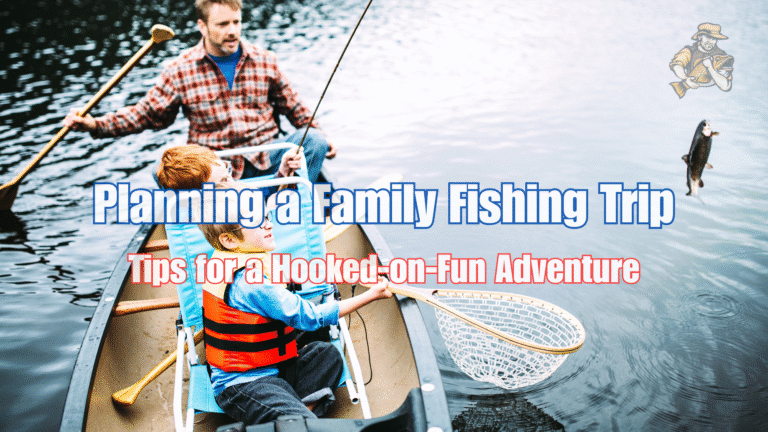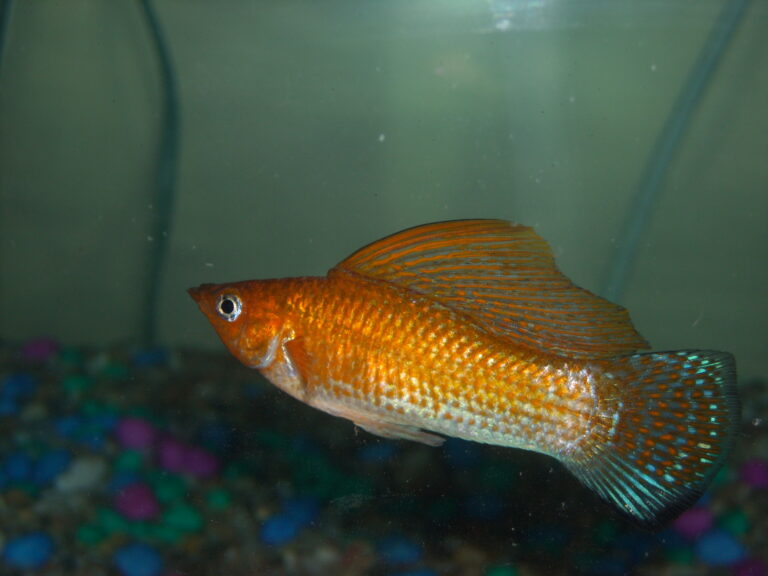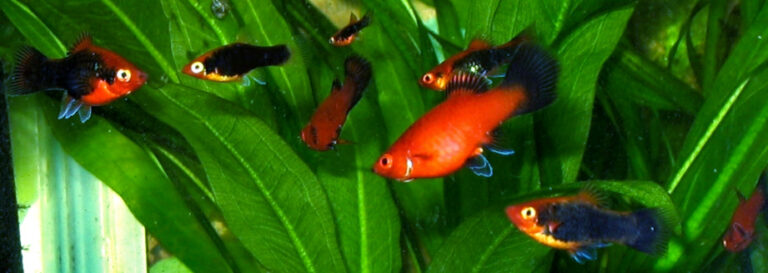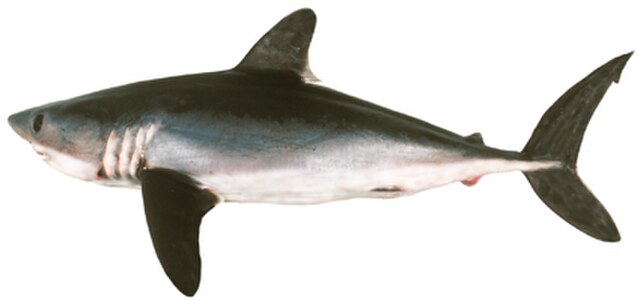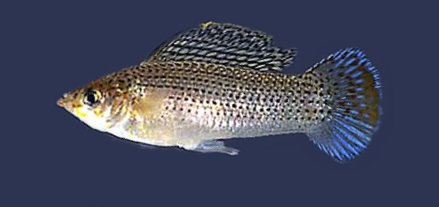How to Fish for Salmon in 2025: Expert Tips and Techniques
By Adam Hawthorne | Last Modified: April 26, 2025

Few fishing experiences match the thrill of feeling a salmon take your line. These powerful fish have captivated anglers for generations, and with good reason. Over my 30 years of chasing these magnificent creatures across North America, I’ve collected plenty of strategies that work consistently – and made plenty of mistakes worth avoiding.
How to Fish for Salmon Successfully
Salmon fishing demands specific approaches depending on species, location, and season. Before diving into specialized techniques, you need to understand the basics of salmon behavior and habitat preferences.
I remember my first salmon fishing trip to the Columbia River. Armed with bass fishing gear and boundless enthusiasm, I returned home empty-handed and humbled. The river taught me an important lesson – salmon require dedicated tactics and proper preparation.
Salmon are anadromous fish, meaning they’re born in freshwater, migrate to the ocean, and return to their birthplace to spawn. This unique lifecycle creates distinct fishing opportunities throughout the year as their patterns and behaviors change dramatically during migration.
Most salmon species found in North American waters include:
- Chinook (King)
- Coho (Silver)
- Sockeye (Red)
- Pink (Humpy)
- Chum (Dog)
- Atlantic
Each species has unique characteristics that influence when and how you should target them. For instance, Kings typically run earlier and deeper than Coho, which tend to be more aggressive surface feeders in coastal waters.
Essential Salmon Fishing Gear
Selecting appropriate gear makes a significant difference in your salmon fishing success. During a recent trip to Lake Michigan, I watched frustrated anglers losing fish after fish because their equipment simply couldn’t handle the power and weight of chinook salmon.
For most salmon fishing situations, you’ll need:
- Rods: Medium to medium-heavy action, 8-10 feet long
- Reels: Quality models with smooth drag systems rated for 15-30 pound line
- Line: 12-30 pound test monofilament or 20-50 pound braided line
- Leaders: Fluorocarbon in 10-20 pound test (essential in clear water)
- Terminal tackle: Various hooks, swivels, weights, and flashers
Research from Washington Department of Fish and Wildlife indicates that proper gear selection can increase hook-up rates by up to 40%, particularly when matched to specific salmon species and water conditions.
Your budget doesn’t need to break the bank. While high-end setups can cost $500+, I’ve had plenty of success with mid-range combos in the $150-250 range. The Okuma Guide Select series offers exceptional value for salmon anglers without premium price tags.
River Salmon Fishing Techniques for 2025
River fishing for salmon requires understanding how these fish move through current and where they hold during their upstream journey. After countless hours on rivers from Alaska to Michigan, I’ve found several approaches that consistently produce results.
Drift Fishing for River Salmon
Drift fishing remains one of the most effective methods for catching salmon in rivers. The technique involves allowing your bait to float naturally through likely holding areas where salmon rest during their upstream migration.
For successful drift fishing:
- Position upstream of likely holding spots (behind boulders, deeper pools, current seams)
- Use enough weight to maintain bottom contact without snagging constantly
- Allow your offering to drift naturally with the current
- Maintain a tight line to detect subtle takes
“I used to overthink drift fishing until an old-timer on the Manistee River showed me his simple approach,” explains veteran guide Tom Hansen. “Control the speed of your drift and keep your presentation in the strike zone longer – that’s really all there is to it.”
According to research published in the North American Journal of Fisheries Management, salmon in rivers strike baits primarily out of aggression rather than feeding behavior, particularly as they approach spawning grounds.
Fishing Salmon Eggs and Roe
Salmon eggs (roe) represent one of the most productive baits for river salmon fishing. Cured salmon eggs, either in sacs or individual eggs, trigger both feeding and territorial responses.
To fish salmon eggs effectively:
- Use size 1/0 to 4 hooks depending on presentation size
- Add small weights 12-24 inches above the hook
- Drift eggs through deep pools and tailouts where salmon rest
- Maintain a natural presentation with minimal line drag
I learned the importance of quality eggs the hard way on Michigan’s Pere Marquette River. After a frustrating morning without strikes, a local angler gifted me some properly cured king salmon eggs. The difference was immediate – three hookups in the next hour.
For preservation, commercial egg cures work well, but many experienced anglers prefer custom recipes. Research from the Great Lakes Fishery Commission suggests borax-based cures preserve eggs without masking their natural attraction.
Spoon and Spinner Techniques
When salmon are aggressive, few presentations outperform quality spoons and spinners. These flashy lures create vibration and visual attraction that can trigger reaction strikes even from non-feeding fish.
Top producing salmon spoons include:
- Blue Fox Vibrax (sizes 4-6)
- Acme Kastmaster (1/2 to 1 oz)
- Little Cleo (3/8 to 3/4 oz)
- Worden’s Original Rooster Tail (1/4 to 1/2 oz)
Retrieve speeds vary dramatically by conditions. In colder water, slow retrieves often outperform fast ones. In warmer conditions or when targeting more aggressive species like Coho, faster retrieves can trigger more strikes.
On Alaska’s Kenai River, I watched a struggling angler casting expensive lures without success. His problem wasn’t the lure quality but his retrieval technique – too fast and jerky for the cold, clear conditions. After suggesting a slower, steadier retrieve with his existing lure, he hooked a nice sockeye within minutes.
Ocean and Great Lakes Salmon Trolling
Trolling accounts for the majority of salmon caught in open water environments like the Pacific Ocean and Great Lakes. While seemingly straightforward, effective trolling requires understanding depth control, speed, and presentation.
Finding the Right Depth
Salmon typically hold at specific depth ranges where temperature and food availability meet their preferences. This thermocline varies seasonally but usually exists between 45-58°F (7-14°C).
Modern fish finders help identify these zones, but paying attention to where other anglers are catching fish provides valuable clues. According to NOAA Fisheries research, salmon spend approximately 80% of their time within their preferred temperature range.
Tools for reaching specific depths include:
- Downriggers (most precise)
- Diving planers
- Lead core line
- Weighted lures
During a Lake Ontario charter, our captain demonstrated the importance of precise depth control. By carefully monitoring his fish finder and adjusting our downriggers to position lures just above a distinct thermocline at 65 feet, we limited out on Chinook in under three hours.
Trolling Speed and Presentation
Trolling speed dramatically influences your success rate. Generally, 1.5-3.5 mph works for most salmon species, but conditions and specific species preferences matter.
- Kings (Chinook): 1.8-2.8 mph
- Coho: 2.5-3.5 mph
- Atlantic: 2.0-3.0 mph
These speeds serve as starting points rather than rigid rules. I’ve had days on Lake Michigan where slowing from 2.7 to 1.9 mph turned a slow day into non-stop action as subtle speed changes triggered inactive fish.
For presentations, popular options include:
- Spoons (Michigan Stinger, Moonshine, Silver Horde)
- Plugs (Brad’s Cut Plug, Yakima Bait FlatFish)
- Hoochies and flies behind flashers
- Cut-bait rigs (especially for Chinook)
Research from Michigan Sea Grant indicates that lure action may be even more important than color, particularly in stained water conditions.
Seasonal Salmon Fishing Strategies for 2025
Timing significantly influences salmon fishing success. Understanding seasonal patterns helps target fish when they’re most active and accessible.
Spring Salmon Fishing
Spring salmon fishing offers excellent opportunities as fish begin staging for spawning runs or actively feeding in warming waters.
In coastal areas and the Great Lakes, spring Chinook (often called “springers”) provide some of the year’s highest quality catches. These fish have high oil content and exceptional table fare.
Techniques that excel during spring:
- Slow trolling with herring or anchovies
- Drift fishing river mouths
- Jigging in deeper holding areas
On the Columbia River one spring, I learned a valuable lesson about patience. Water temperatures were still in the mid-40s, requiring painfully slow presentations. By slowing my retrieve to almost imperceptible movement, I finally connected with my first spring Chinook – still one of my most memorable catches.
According to biologists at Oregon Department of Fish and Wildlife, spring salmon metabolism increases approximately 7% for every 1°F rise in water temperature, directly affecting their feeding activity and strike likelihood.
Summer Salmon Fishing
Summer provides peak salmon fishing in most regions as fish actively feed before spawning runs. Ocean and Great Lakes trolling excels during this period, with fish often found in predictable patterns along temperature breaks and structure.
For summer success:
- Fish early mornings and evenings during hot periods
- Look for temperature breaks where cooler water meets warmer surfaces
- Target structure like underwater humps, points, and drop-offs
- Use faster retrieves and trolling speeds than spring
During summer trips to Lake Michigan, I’ve noticed that the morning bite often differs dramatically from evening action. Morning fish typically hold deeper and prefer slower presentations, while evening salmon move shallower and respond to faster-moving lures. Adjusting to these daily patterns doubled our catch rates.
Fall Salmon Fishing in Rivers
Fall brings the most dramatic salmon fishing as mature fish enter rivers to spawn. This period offers shore anglers their best opportunity to target salmon without boats.
Fall river tactics include:
- Float fishing with eggs or yarn
- Casting spoons and spinners in deeper pools
- Fly fishing with egg patterns and streamers
- Drift fishing with cured roe
A common mistake I see each fall involves anglers targeting visible spawning fish. While these fish are accessible, they’ve largely stopped feeding and rarely provide quality hookups or table fare. Instead, focus on staging areas where pre-spawn fish hold before moving onto redds.
The Pacific Fishery Management Council reports that approximately 70-85% of a salmon’s feeding occurs before entering freshwater for spawning, explaining why fresh-run fish provide more consistent action.
Regional Salmon Fishing Hotspots
While salmon can be found throughout their native and stocked ranges, certain locations consistently produce exceptional fishing opportunities.
Pacific Northwest Salmon Fishing
The birthplace of North American salmon fishing continues offering world-class opportunities. Key locations include:
- Puget Sound (year-round opportunities for various species)
- Columbia River (spring and fall Chinook runs)
- Coastal rivers of Washington and Oregon
- Vancouver Island tributaries
On my trip to Washington’s Olympic Peninsula, I fished alongside anglers who had traveled from Europe and Asia specifically for these legendary waters. The Quillayute River system produced the largest Coho I’ve ever seen – a 22-pound buck that tested every component of my tackle.
The Pacific Salmon Foundation notes that despite population challenges, careful management has maintained viable recreational fisheries throughout the region.
Great Lakes Salmon Opportunities
The Great Lakes support thriving salmon populations thanks to stocking programs initiated in the 1960s. Prime locations include:
- Lake Michigan’s eastern shoreline
- Lake Ontario tributaries
- Lake Superior’s southern shore
- Lake Huron’s recovery zones
Having fished all five Great Lakes, I’m continually amazed by Lake Michigan’s salmon fishery. During peak summer months, catches rivaling West Coast opportunities are common, with Chinook frequently exceeding 20 pounds.
According to the Great Lakes Fishery Commission, approximately 65% of Great Lakes salmon are naturally reproducing despite being initially established through stocking programs.
Alaska Salmon Fishing
Alaska remains the gold standard for wild salmon abundance and size. Premier destinations include:
- Kenai River (world-record Chinook)
- Copper River (legendary Sockeye runs)
- Southeast Alaska’s island systems
- Bristol Bay tributaries
My week-long Alaska trip five years ago fundamentally changed how I approach salmon fishing. The sheer number and size of fish were humbling. More importantly, watching skilled guides and locals taught me efficiency and precision that I’ve applied everywhere since.
Conservation and Ethical Salmon Fishing
Responsibility remains critical for maintaining healthy salmon populations. As someone who’s witnessed both thriving fisheries and declining runs, I strongly advocate for conservation-minded approaches.
Proper Catch and Release Techniques
When practicing catch and release:
- Use barbless hooks for easier removal
- Minimize time out of water (under 30 seconds when possible)
- Support the fish’s weight horizontally
- Revive fish thoroughly before release
Research published in the Journal of Fish Biology indicates that proper catch and release techniques can reduce mortality by up to 80% compared to improper handling.
During a guided trip on Oregon’s Deschutes River, I watched our guide handle fish with remarkable care – keeping them in the water during unhooking, using rubber nets to protect slime coats, and ensuring proper revival before release. His techniques have become standard practice in my own fishing.
Understanding Regulations and Seasons
Regulations protect vulnerable salmon populations during critical life stages. Always:
- Check current regulations before fishing
- Understand size and bag limits
- Know seasonal closures and restrictions
- Identify species correctly for specific regulations
The patchwork of salmon regulations can seem overwhelming, but resources like FishHunt compile current regulations by location, making compliance straightforward.
FAQs About Salmon Fishing in 2025
What’s the best time of year to catch salmon?
The ideal time varies by species and location. Generally, spring through fall offers the best opportunities, with peak river runs typically occurring in late summer through fall. For Great Lakes salmon, mid-summer through early fall provides consistent action, while Pacific runs vary by species with most activity between July and November. According to NOAA Fisheries, climate shifts have altered traditional run timing by 1-3 weeks in many regions.
Which salmon species tastes best?
King (Chinook) and Sockeye (Red) salmon generally receive highest marks for flavor and texture due to their high oil content. Coho offers excellent taste with milder flavor. Personal preference plays a significant role, but freshness matters more than species – a properly handled Pink salmon will taste better than poorly cared for Chinook.
What’s the difference between wild and stocked salmon?
Wild salmon are born naturally in streams, while stocked fish come from hatcheries. Wild salmon typically have more vibrant coloration, firmer flesh, and fight more aggressively. Stocked salmon support fisheries where natural reproduction cannot sustain populations, particularly in the Great Lakes. Research from Michigan State University shows that successive generations of naturally reproducing stocked salmon increasingly display characteristics similar to wild fish.
How do I find salmon in lakes and oceans?
Focus on temperature breaks (where warm and cold water meet), underwater structure, and bait concentrations. Modern fish finders help identify these features. In summer, salmon often follow the thermocline where temperature creates a comfort zone typically between 45-58°F. During feeding periods, salmon frequently chase baitfish schools near surface waters, creating visible activity.
What line should I use for salmon fishing?
For most salmon fishing, 15-30 pound test monofilament or 20-50 pound braided line works well. When trolling, monofilament’s stretch provides shock absorption during strikes. For river fishing, braided line offers better sensitivity for detecting subtle bites. Always use a fluorocarbon leader (10-20 pound test) in clear water conditions to reduce visibility to fish.
How can I fish for salmon without a boat?
Target river systems during spawning runs when salmon become accessible from shore. Productive methods include drift fishing, casting spoons or spinners, and float fishing with eggs. Piers and breakwalls on the Great Lakes also provide opportunities during seasonal migrations. The Great Lakes Steelhead and Salmon Association maintains information on shore fishing access points throughout the region.
The Future of Salmon Fishing
As we move through 2025, salmon fishing faces both challenges and opportunities. Climate change continues altering migration patterns and habitat conditions. Meanwhile, conservation efforts and improved management practices support population recovery in many regions.
For anglers willing to adapt techniques and expectations, excellent opportunities remain available. By staying informed about seasonal patterns, using appropriate gear, and practicing conservation-minded approaches, you’ll maximize success while helping preserve these fisheries for future generations.
Remember that successful salmon fishing combines preparation, patience, and willingness to learn from each experience. Even after three decades chasing these magnificent fish, I still discover new approaches and patterns every season.
What salmon fishing questions do you have? Drop a comment below or share your own experiences with our community.

Meet Adam Hawthorne
I’m a lifelong fishing enthusiast who’s spent years exploring rivers, lakes, and oceans with a rod in hand. At Fishing Titan, I share hands-on tips, honest gear reviews, and everything I’ve learned about fish and ocean life, so you can fish smarter and enjoy every cast.
Share:

Meet Adam Hawthorne
I’m a lifelong fishing enthusiast who’s spent years exploring rivers, lakes, and oceans with a rod in hand. At Fishing Titan, I share hands-on tips, honest gear reviews, and everything I’ve learned about fish and ocean life, so you can fish smarter and enjoy every cast.
Related Articles
-
Planning a Family Fishing Trip: Tips for a Hooked-on-Fun Adventure
There’s something almost magical about watching a kid’s face light up when they feel that first tug on their fishing line. I still remember when…
-
Mastering Fishing Casting Techniques: Complete Guide
Have you ever watched someone cast their line with perfect precision while you struggle to avoid tangling yours in nearby trees? I’ve been there too….
-
Silver Molly
The Silver Molly (*Poecilia sphenops*) stands as one of the most recognizable and adaptable freshwater fish species in both natural ecosystems and home aquaria worldwide….
-
Sailfin Molly
The Sailfin Molly stands as one of the most distinctive freshwater fish species in both wild ecosystems and aquarium environments. Known scientifically as *Poecilia latipinna*,…
Fish Species
-
Southern Platyfish
The Southern Platyfish, scientifically known as *Xiphophorus maculatus*, represents one of the most significant freshwater fish species in both wild ecosystems and the global aquarium…
-
Porbeagle Shark
The Porbeagle Shark (*Lamna nasus*) stands as one of the most fascinating and ecologically significant predators in the North Atlantic and North Pacific oceans. This…
-
Tiger Barb
The Tiger Barb (Puntigrus tetrazona) stands as one of Southeast Asia’s most recognizable freshwater cyprinids, distinguished by its vibrant golden-orange coloration and distinctive black vertical…
-
Black Molly
The Black Molly represents one of the most recognizable and enduring species in the freshwater aquarium trade, captivating both novice and experienced aquarists with its…

